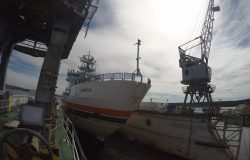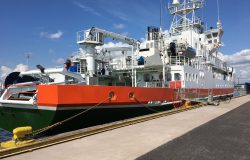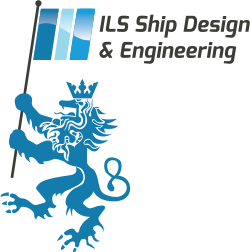Length 59.20 m
Breadth 13.80 m
Draught 5.00 m
Gross tonnage 1 734 GT
Engine power 3 000 kW
Transit speed 10.5 knots
Operating time (max.) 60 days
Research staff 25 people
Crew 12–13 people
Laboratory facilities 124 m²
Wet laboratory 9 m²
Climate room 16 m²
IT and office space 32 m²
Workshop 7 m²
Sampling space 132 m²
Helicopter deck
Research and storage container facilities
Sauna, gym and laundry
Weather station:
Wind speed and direction, air pressure, air
humidity and temperature, solar radiation, seawater temperature and conductivity every minute.
Positioning devices: 2xDGPS and ECDIS.
Communication equipment:
Immarsat Fleet 77, Inmarsat C, VHF/MF/HF,
MF/HF telex, DSC VHF/MF, aviation VHF GSM
connections.
IT equipment:
The laboratories have computers connected to a local network. From the network servers is available
new laboratory, observation data and weather data systems. In-ship communication
served by the intranet and info channel system.




